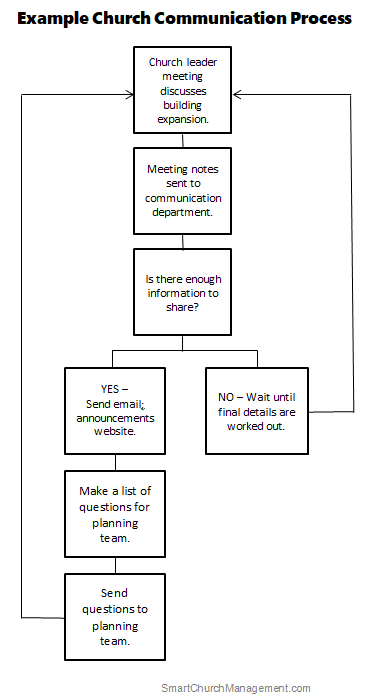Estimated reading time: 6 minutes
If we have learned anything these past couple of years it is that things can change rapidly.
Think back to the early days of the pandemic and how information was changing quickly and often.
The efforts to flatten the curve and the introduction of protective measures to keep people safe seemed to have been a moving target.
For churches, we had to pivot and provide streaming services. This required lots of changing information that needed to be shared with employees and volunteers.
Businesses and churches were judged based on their ability to communicate in the rapidly changing environment.
Why is church communication so important?
Managing communication is critical to the success of any organization, but specifically non-profits that are built on the trust and donations of their members.
People involved in a ministry have a vested interest in what the organization is doing and how they are performing.
Church communication management is about sharing information in a proactive way to keep employees, volunteers, and members informed and engaged.
However, in order to be proactive, you will need a process for communicating information that members and donors are interested in.
For instance, members and donors will have an interest if there are plans underway to update technology to support the new era of an online church. Share information with key stakeholders to get them excited about the changes.
3 Tips For Managing Church Communications
1. Create a Process for Communicating
The communication process is important because it sets the expectation for how information is shared.
This process should be structured enough that those receiving the communication can reasonably predict how and when the information will be received.
For example, a new volunteer may receive information about his/her job assignment in any number of ways: via email, postal letter, telephone, or church website.
Regardless of how he/she receives the assignment, there should be a defined communication process for receiving the information.
Another example might be how church members receive information about new projects the church is working on.

Things like adding space to the facilities, creating new staff positions, or a new program that is being developed – are all things members are interested in.
This kind of information may be communicated at church meetings, by pulpit announcements, in postal letters, or on the church website.
The communication process is not as important as its consistency and thoroughness.
The secret to effective communication is to answer the questions before they are thought of!
2. Determine What Gets Communicated
Church members, volunteers, and employees need to receive lots of information. Help them by providing them with a good understanding of what kinds of information they can expect to receive.
For instance, include in your new member class or volunteer orientation what and how you commit to communicating. This commitment to communication helps to ensure confidence in leadership.
The ministry should have defined guidelines for what gets communicated, to whom, how often, and in what format.

For example, you should determine if it is standard practice to share information about major church purchases or initiatives during the planning phase, budgeting phase, or after all the details are figured out.
This standard practice provides guidance to those who are responsible for sharing information and ensures consistency in practice.
Regardless, church communications should adhere to pre-established guidelines that are used to steer information sharing.
What should be included in communication guidelines?
Guidelines should specify who receives information, what kind of information gets shared, the process for sharing the information, and the timeliness of what gets communicated.
For instance, your church may have guidelines that say something like this:
Example Communication Guidelines For A Church
ABC Church will communicate with key stakeholders in the following order:
- Employees
- Volunteer Leaders
- Church Members
- Other Stakeholders
- Community
ABC church will share the following information with employees, volunteers, and members:
- Strategic planning initiatives;
- Mission, vision, and values;
- Annual church goals;
- Budgeting and financial health;
- New global facility projects;
- Succession planning for key church leaders;
- Staff turnover;
- Leadership changes;
- State of the church;
- Death of members.
ABC church commits to sharing information in several ways:
- Text (for emergency contact only)
- Traditional mail
- Church website
- Pulpit announcements
- Church meetings
ABC church commits to sharing pertinent information as soon as reasonably possible but immediately in times of crisis or time-sensitive (funerals) events.
Consistency is Vital!
Consistency in communication helps gain trust and credibility with those whom the church serves.
Identifying a communication advocate is the best way to ensure effective information sharing.
This person should be responsible for thinking about who needs to know what information, when the information should be shared, and how the information will be shared.
Create a job description for this role and set targets for information sharing.
3. Incorporate Two-way Communication
Two-way communication is important because it helps to minimize misunderstandings and it helps to engage others.
When people are allowed to ask clarifying questions, it helps to resolve issues and it opens the door for better understanding and buy-in.
This kind of communication can be done on a one-on-one basis, in large group open-forum settings, congregant focus groups, or electronically via the website, church app, or other customer feedback tools.
It is important for processes to be developed to encourage two-way communication with the congregation, volunteers, and employees.
For instance, if your church is considering a facility update, conduct a focus group with employees and members to get feedback as you go through the process.
When you understand concerns, you can develop a plan that addresses any objections that members or staff might have.
Leadership is about leading others.
Leadership is all about the process of leading others.
This includes the way information is shared, how well others are communicated with, and how well the mission and vision are kept in front of the people.
Does your church have a plan for communicating with church members?



